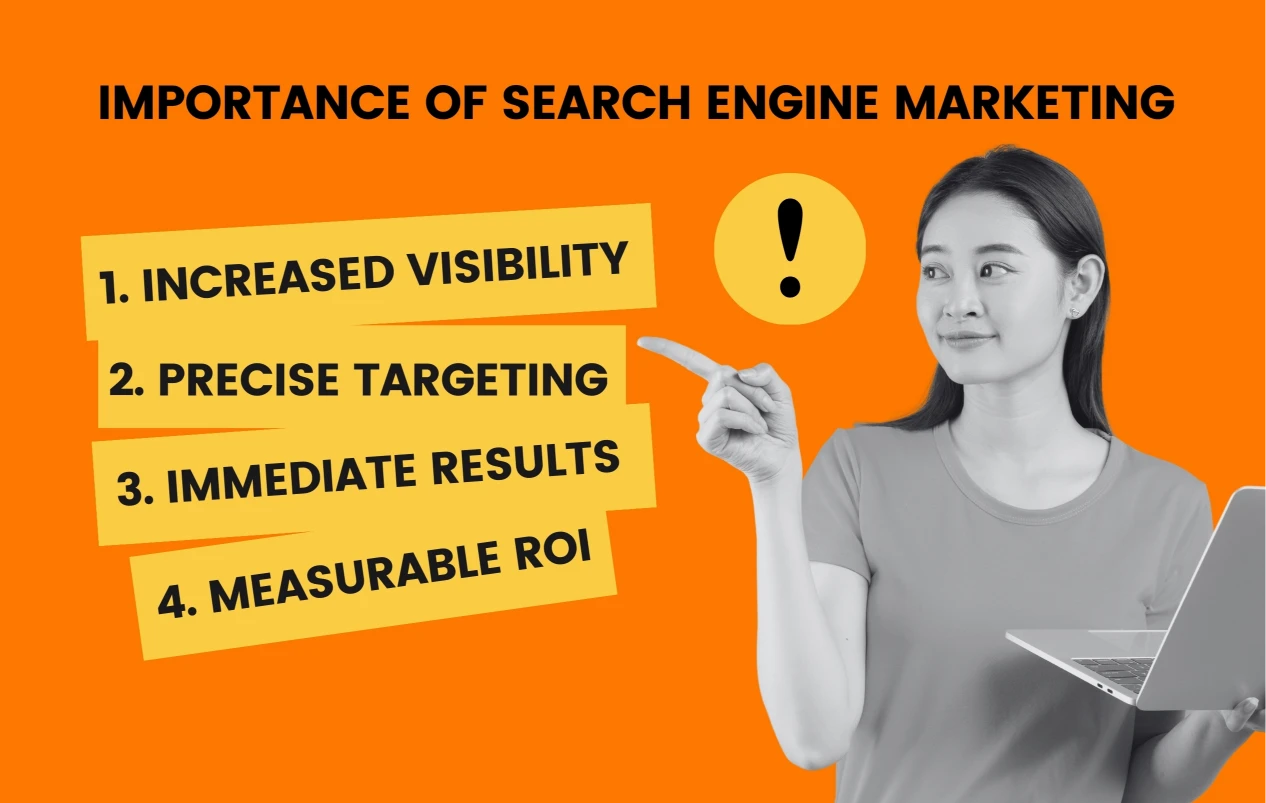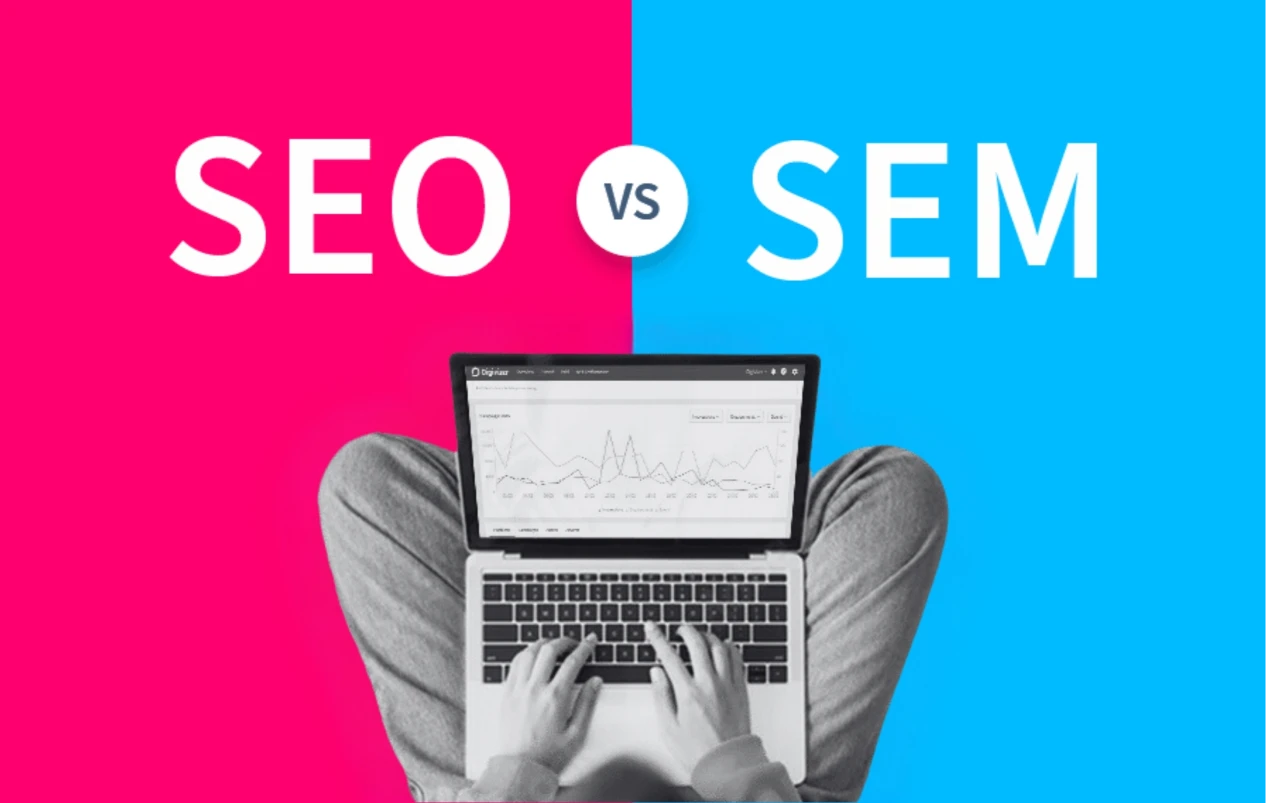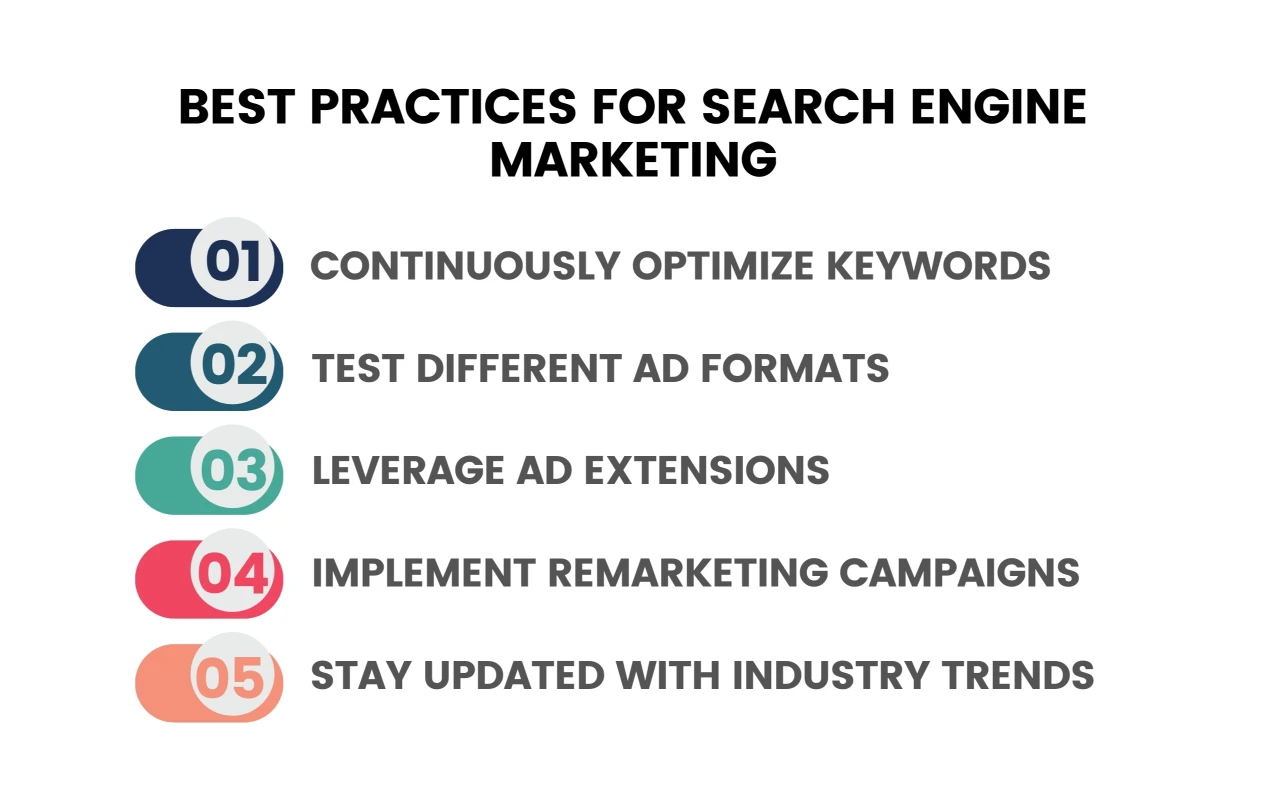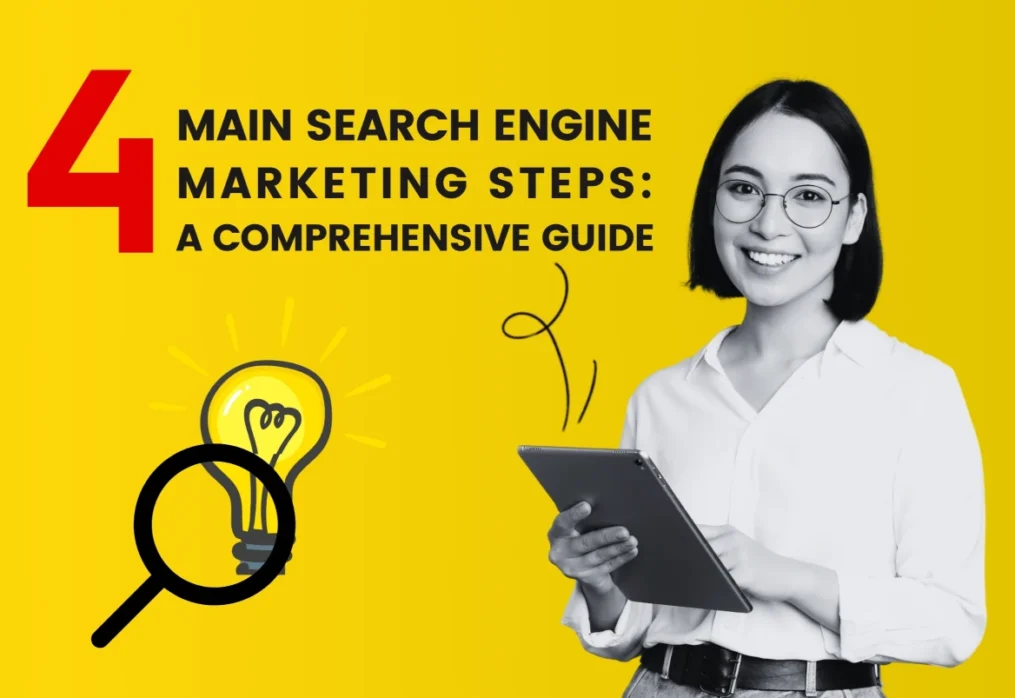4 Main Search Engine Marketing Steps: A Comprehensive Guide
Welcome to the ultimate guide on mastering the search engine marketing steps. Whether you’re a seasoned marketer or just starting out, understanding the ins and outs of search engine marketing is essential to propel your business to new heights. In this comprehensive guide, we will provide you with all the information you need to take your online presence to the next level.
From keyword research to campaign optimization, we will dive deep into each step of the search engine marketing process, equipping you with the knowledge and strategies necessary to outshine your competitors. Discover the secrets of crafting highly converting ad copy, learn how to effectively target your audience, and steer clear of common pitfalls along the way.
Unlock the immense potential of search engine marketing and accelerate your business growth. Whether you’re looking to increase website traffic, boost conversions, or maximize your return on investment, this guide has got you covered. Join us as we unravel the mysteries of search engine marketing and pave the way to success in the digital landscape.
Understanding Search Engine Marketing

Search engine marketing (SEM) is a powerful strategy that allows businesses to promote their products and services through paid advertisements on search engine results pages. Unlike organic search results, these ads are displayed at the top of the page, making them highly visible to users actively searching for relevant keywords. SEM provides businesses with an opportunity to target their audience effectively and achieve immediate results.
SEM involves a combination of techniques, including keyword research, ad copy creation, landing page optimization, and campaign tracking. By mastering each step of the SEM process, you can increase your website’s visibility, attract qualified traffic, and ultimately drive conversions.
To get started, familiarize yourself with essential SEO marketing definitions to better grasp the concepts discussed in this section.
Importance of Search Engine Marketing

In today’s digital landscape, search engine marketing has become an indispensable tool for businesses of all sizes. Here are a few reasons why SEM is crucial for your online success:
1. Increased visibility
With SEM, your brand can secure a prominent position on search engine results pages, ensuring that your target audience sees your ads when they are actively looking for products or services like yours.
2. Precise targeting
SEM allows you to precisely target your audience based on factors such as location, demographics, interests, and search queries. This level of precision ensures that your ads are shown to the most relevant audience, maximizing your chances of conversion.
3. Immediate results
Unlike search engine optimization (SEO), which can take time to show results, SEM offers instant visibility and results. By launching a well-optimized SEM campaign, you can start driving targeted traffic to your website within hours.
4. Measurable ROI
SEM provides detailed analytics and tracking capabilities, allowing you to measure the success of your campaigns accurately. You can track metrics such as click-through rates, conversion rates, and return on investment (ROI) to optimize your campaigns and maximize your marketing budget.
Difference Between Search Engine Marketing and Search Engine Optimization

Though often used interchangeably, search engine marketing (SEM) and search engine optimization (SEO) are two distinct strategies. Understanding the difference between the two is crucial for implementing an effective marketing strategy.
SEM refers to the process of promoting your website through paid advertisements on search engine results pages. These ads are typically displayed at the top of the page and labeled as “sponsored” or “ad.” The placement of these ads is determined by a bidding system, where advertisers bid on specific keywords and compete for ad placement.
On the other hand, SEO is the process of optimizing your website to improve its visibility in organic (non-paid) search engine results. SEO involves various techniques, such as optimizing website content, improving site structure, and acquiring high-quality backlinks. Unlike SEM, SEO aims to increase organic traffic without relying on paid advertisements.
While both SEM and SEO are essential components of a comprehensive digital marketing strategy, they serve different purposes. SEM provides immediate visibility and results, while SEO focuses on long-term organic growth. Combining these two strategies can help businesses achieve maximum online visibility and drive significant results.
Understanding the relationship between UX and SEO is crucial for optimizing your website and ensuring a seamless user experience that complements your SEM efforts.
The Search Engine Marketing Process
To master search engine marketing, it’s crucial to understand the different steps involved in the process. Let’s explore each step in detail:
1. Keyword Research for Search Engine Marketing

Keyword research is the foundation of any successful search engine marketing campaign. By identifying the right keywords, you can ensure that your ads are displayed to users who are actively searching for products or services like yours.
Start by brainstorming a list of relevant keywords and phrases that are closely related to your business. Use keyword research tools to expand your list and identify high-volume, low-competition keywords that align with your campaign goals. Consider the search intent behind each keyword and choose those that are most likely to drive conversions.
Once you have a list of target keywords, organize them into ad groups based on relevance. This will help you create more targeted and compelling ad copy later in the process. Continuously monitor and refine your keyword list to optimize your campaigns for maximum performance.
2. Creating Compelling Ad Copy

Crafting compelling ad copy is essential to grab the attention of your target audience and entice them to click on your ads. Here are a few tips to create impactful ad copy:
Be concise: Use clear and concise language to convey your message effectively. Keep your ad copy focused and highlight the unique selling points of your product or service.
Include keywords: Incorporate your target keywords into your ad copy to increase relevance and improve quality scores. This will help improve the positioning and visibility of your ads.
Highlight benefits: Clearly communicate the benefits or solutions that your product or service offers. Show your audience how your offering can fulfill their needs or solve their problems.
Create urgency: Use compelling call-to-action phrases to create a sense of urgency and encourage immediate action. Limited-time offers or exclusive deals can help drive conversions.
If you’re new to creating ads, exploring content creation for beginners can offer invaluable insights into crafting engaging and effective ad copy.
3. Setting Up and Optimizing Landing Pages

A well-designed and optimized landing page is crucial for converting traffic into leads or customers. When users click on your ads, they should be directed to a landing page that is relevant to their search query and provides a seamless user experience.
Ensure that your landing page has a clear and compelling headline that matches the ad copy. Keep the content focused, concise, and easy to read. Use bullet points, subheadings, and visuals to enhance readability and highlight key information.
Optimize your landing page for conversions by incorporating a clear call-to-action (CTA) that prompts users to take the desired action, such as making a purchase or submitting a form. Use A/B testing to experiment with different elements, such as CTA placement, button color, or form length, to optimize your landing pages for maximum conversions.
4. Tracking and Analyzing Search Engine Marketing Campaigns

To measure the success of your search engine marketing campaigns, it’s essential to track and analyze key metrics. By monitoring these metrics, you can identify areas for improvement and optimize your campaigns for better performance.
Track metrics such as click-through rates (CTR), conversion rates, average cost per click (CPC), and return on ad spend (ROAS). Use analytics tools to gain insights into user behavior, demographics, and device preferences. This data can help you refine your targeting, optimize your ad copy, and allocate your budget more effectively.
Regularly analyze your campaign performance and make data-driven decisions to improve your return on investment (ROI). Test different ad variations, landing page designs, and targeting options to identify the strategies that yield the best results.
For those new to SEM, a comprehensive Google ads guide can help you navigate the complexities of setting up and managing your campaigns.
Best Practices for Search Engine Marketing

To ensure the success of your search engine marketing campaigns, here are some best practices to keep in mind:
1. Continuously Optimize Keywords
Regularly monitor and update your keyword list to include new trends and search queries. Remove underperforming keywords and focus on those that drive the most conversions.
2. Test Different Ad Formats
Experiment with different ad formats, such as text ads, display ads, and video ads, to identify the ones that resonate most with your audience. A/B test different variations to determine the most effective messaging and design.
3. Leverage Ad Extensions
Ad extensions provide additional information and call-to-action options within your ads. Utilize extensions such as sitelinks, call buttons, and location information to enhance your ad’s visibility and drive more engagement.
4. Implement Remarketing Campaigns
Retargeting users who have previously interacted with your website or ads can significantly improve conversion rates. Set up remarketing campaigns to re-engage these users and encourage them to take the desired action.
5. Stay Updated with Industry Trends
The digital marketing landscape is constantly evolving. Stay up-to-date with the latest industry trends, algorithm changes, and best practices to ensure that your search engine marketing campaigns remain effective.
Utilize proficient-recommended marketing tools to streamline your SEM process, from keyword research to campaign analysis.
Conclusion
Mastering the search engine marketing steps is the key to unlocking the immense potential of online advertising. By understanding the fundamentals of SEM, conducting thorough keyword research, creating compelling ad copy, optimizing landing pages, and tracking campaign performance, you can drive targeted traffic, boost conversions, and maximize your return on investment.
Remember to continuously monitor and refine your campaigns, keeping up with the ever-changing digital landscape. Embrace the power of search engine marketing and pave the way to success in the competitive online world. Let your business shine and outperform your competitors with a well-executed SEM strategy.
Elevate your SEM strategy by considering Adzeem’s SEM services in Maryland, offering expert guidance to maximize your online presence.
